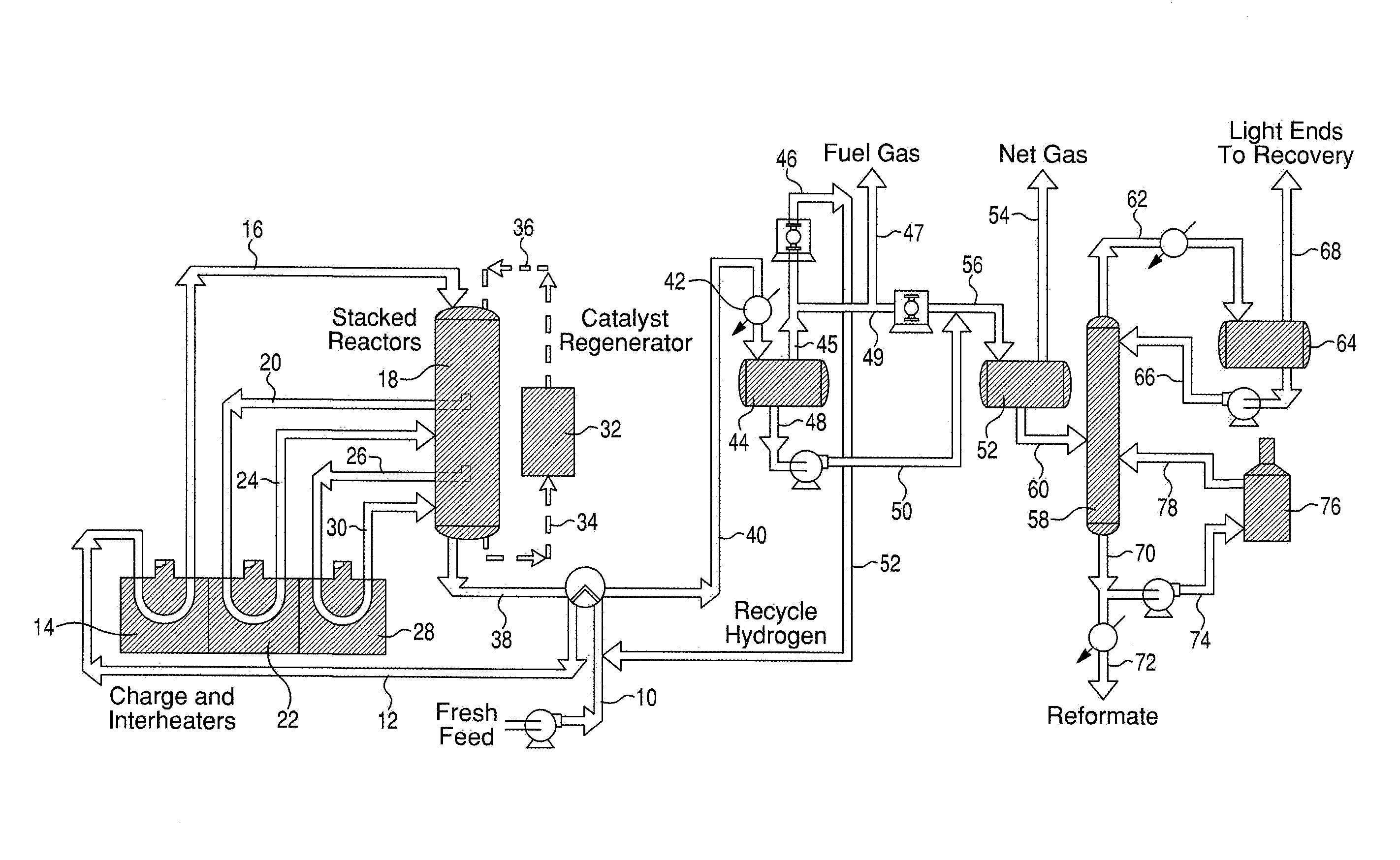Organic Chloride Adsorbent
a technology of organic chloride and adsorption, which is applied in the direction of catalyst regeneration/reactivation, physical/chemical process catalysts, separation processes, etc., can solve the problems of reducing the yield of products boiling in gasoline range, unsatisfactory reaction during reforming, and low quality, so as to improve the adsorption of organic chlorides
- Summary
- Abstract
- Description
- Claims
- Application Information
AI Technical Summary
Problems solved by technology
Method used
Image
Examples
example
[0031]Experiments utilizing vinyl chloride as the model organic chloride compound and a variety of adsorbents have been tested, including alkali supported on alumina, zinc oxide, and several 13X type zeolites. All experiments have been run in gas phase, typically employing a mixture of nitrogen and helium to serve as inert gas surrogates for hydrogen. Low levels of vinyl chloride were added to the inert gases to approximate partial pressures (e.g., 0.00015 to 0.003 psia) typical of refinery applications for the purification of net-hydrogen streams. The adsorbents were loaded into an adsorber vessel and the vinyl chloride containing gas fed to the vessel at space velocities generally much higher than that of commercial applications so as to compress the time required for breakthrough, thus enabling more rapid experimentation. Outlet levels of vinyl chloride were determined using a calibrated Leco GC / TOFMS, capable of quantifying vinyl chloride to much less than 1 ppmv.
[0032]It was ob...
PUM
| Property | Measurement | Unit |
|---|---|---|
| mole ratio | aaaaa | aaaaa |
| molar ratio | aaaaa | aaaaa |
| molar ratio | aaaaa | aaaaa |
Abstract
Description
Claims
Application Information
 Login to View More
Login to View More - R&D
- Intellectual Property
- Life Sciences
- Materials
- Tech Scout
- Unparalleled Data Quality
- Higher Quality Content
- 60% Fewer Hallucinations
Browse by: Latest US Patents, China's latest patents, Technical Efficacy Thesaurus, Application Domain, Technology Topic, Popular Technical Reports.
© 2025 PatSnap. All rights reserved.Legal|Privacy policy|Modern Slavery Act Transparency Statement|Sitemap|About US| Contact US: help@patsnap.com

